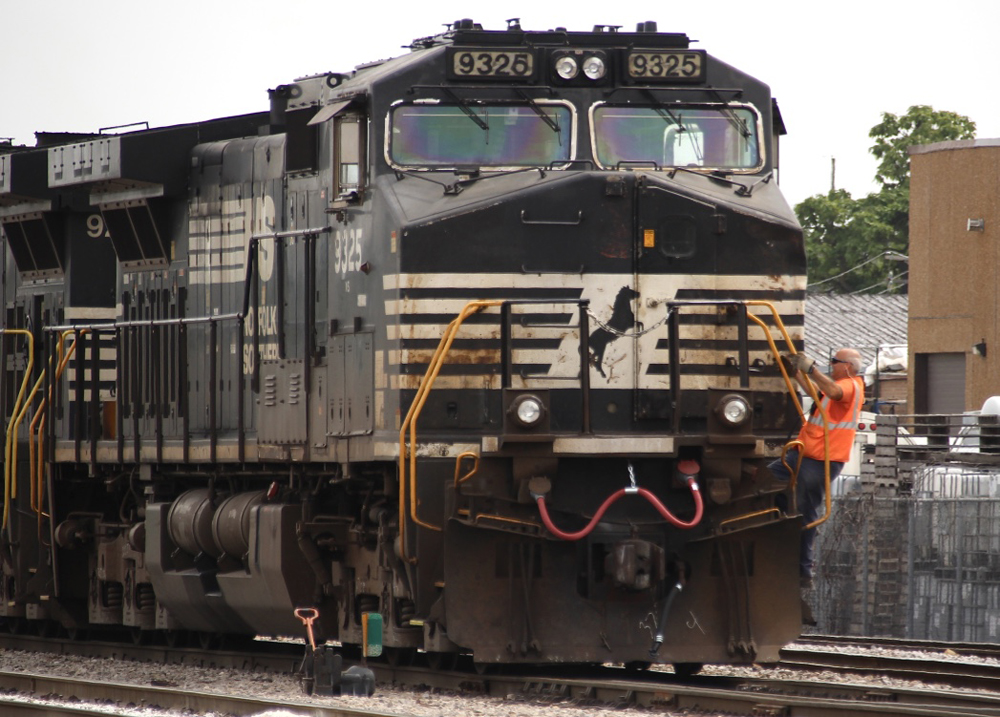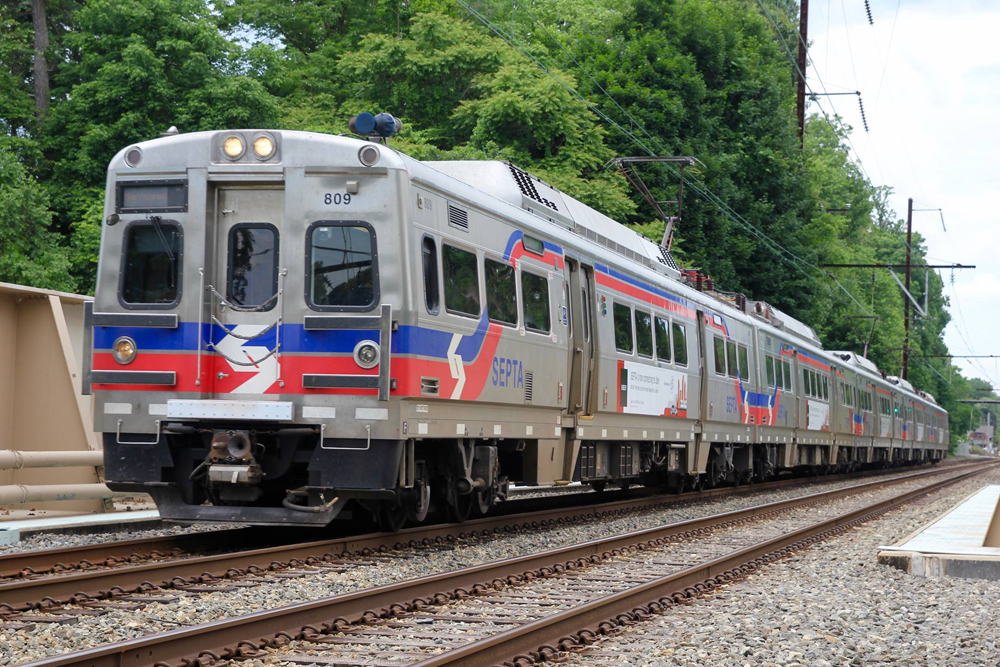
Norfolk Southern and the SMART-TD union have ended negotiations over redeploying conductors to ground-based positions.
The railroad and union instead will focus on implementing other immediate quality of life improvements, NS said today.
“Over the next year, SMART-TD and Norfolk Southern have the opportunity to work together to implement important predictability improvements for our conductor workforce,” Jeremy Ferguson, president of SMART-TD, said in a statement. “These scheduling enhancements, which were part of last year’s national agreements, have the potential to make an immediate positive impact for our conductors by giving them fixed days off and greater certainty about their weekly assignments. The willingness of NS to step back from plans to change to a ground-based conductor model is a welcome show of good faith in the negotiation process.”
Under the terms of the national agreements, NS and SMART-TD have a mid-June deadline to negotiate the details of scheduling improvements. Given this limited window, Norfolk Southern has withdrawn its current Section 6 bargaining notice on conductor redeployment.
“Norfolk Southern is committed to working with labor partners, including SMART-TD, to identify and negotiate benefits that will have a meaningful impact on our employees’ quality of life,” Wai Wong, NS vice president of labor relations at Norfolk Southern, said in a statement. “While redeployment of conductors to ground-based shift-work will provide more predictable jobs and minimize time away from home, there are a number of other priorities that our labor partners would like to address, and we are committed to working together to make immediate progress.”
The withdrawal of the Section 6 notice on conductor redeployment removes the mandatory requirement for the parties to bargain over the issue, though voluntary discussions remain an option.
The Federal Railroad Administration is proposing a two-person crew rule, while the Rail Safety Act of 2023 that was filed in the Senate this month also would require two people to be in the cab of the locomotive.














2 people in the cab of a locomotive or the cockpit of an airplane are needed, if for nothing else, for safety in case one person is incapacitated while on the road or in the air. Out-of-control trains or airplanes can potentially kill thousands in trackside towns or on the ground in the flight path of a plane, given a worst-case scenario. There are plenty of other valid reasons – operating efficiency, unnecessary delays for a conductor to get to a train that is having mechanical issues, increased need for recrews, etc. that have been discussed in this forum over the last several months. The railroads paint a very rosy picture when trying to sell the 1-person crew idea, but it bears little resemblance to actual conditions out on the road, based on what the railroaders who post comments on News Wire have said. I think I can safely say that the overwhelming majority are opposed to the idea.
Let’s take a moment to celebrate the fact that a Class 1 has started to wake up and realize that they need to focus more on safety and their employees, and less on the operating ratio, in order to stave off the heavy, clumsy hands of government bureaucracies and regulators, and avoid the endless line of gleeful, salivating personal injury attorneys.
The other Class 1’s will eventually fall in line. It’s a shame that it took the tragedies of East Palestine and Lac Megantic to get them to this point, but they now realize what such an occurrence can cost in terms of lives ruined or lost, environmental damage, endless lawsuits, and the cost of establishing funds to make the survivors whole financially as far as that is possible.
Negative motivation to prevent further disasters is a good thing.
Actually the remarkable thing is that someone at NS gets it that this is not the time to push a radical restructuring idea. In the past there would have been no talk of working with the union, it would have been a shove it down your throat position by the railroad. Maybe there has been a change in the way the new management works.
Driverless trucks operate on the same fallacy as one person train crews. A driverless truck in a snowstorm on I80 along the south side of the Chicago area? Ever been on I80 on the southside of Chicago? AIN’T HAPPNIN!
And toss in a one man crew on the NS derailment? JUST INSANE.
Airlines seem to think a one man crew on a 737 is a great idea too. Look at the Southwest captain that passed out just this week. A pilot from another airline, was qualified, and came into the cockpit to assume some responsibility to help get the plane and sick captain back to Las Vegas….running a train, driving a big rig and flying a plane HAVE TO HAVE CREW MEMBERS ON BOARD.
Anyone who argues for engineer only has and never will understand real railroading and what a conductor actually does and forming opinions based on what information the railroads disseminate is completely absurd. I challenge all who believe the railroads to go work as one for a day and you will be convinced otherwise. All you hear and read about these days is how screwed up the railroads are or how their trains are a mess, so on and so forth. Wait until those railroads have a conductor that’s based let’s say every 100 miles and or somehow unavailable for any number of reasons and you all will be scratching your heads till your hair falls out wondering why on gods green earth they’d take the conductor out of the engine. They might get it some day who knows but mark my words they’re making a huge mistake. We TYE have been screaming to the public and government for 5 years the shitshow PSR is and we kept getting blown off until one little accident in Ohio takes place and suddenly the masses start to listen for a second. Well let me say this, we are warning you same people the dangers of only one man in that cab and well maybe another little accident like lac megantic Canada needs to happen to shut the dimwits up.
I can see where ground-based conductors might make sense, if well staffed, but not as a reduction of the total head count. There’s few enough T+E as it is.
Did a one-person crew lead to Lac-Megantic? A case could be made for that conclusion. Personally I have thought so myself.
Not entirely Charles, but the system of checks and balances was non existent in the case of lac megantic. In that case the engineer only crew didn’t tie enough brakes and the train rolled away, he did so because he was in a hurry and wanted to be done for the day. In that instance if there was a conductor the possibility of that conductor tieing the train down properly and the odds of that incident not happening would be greatly reduced, not saying eliminated but GREATELY reduced and if those odds were reduced that town and it’s people wouldn’t have had to deal with what happened.
The horrible tragedy of Lac Megantic was the result of more than one failure. (Yes. I read the final report) The one-person crew aspect is partly to blame as an extension of the engineer’s lack of understanding of the rules. A conductor who routinely handles hand brakes has a better understanding of these procedures. Also, if there are 2 crewmembers, it is a much easier, less time consuming and more efficient process to tie down a train AND test the effectiveness of the brakes before leaving the train unattended.
To blame the engineer alone is to ignore all of the factors involved. It is a telling consequence that rules were changed after the crash as a result of the investigation. The old saying is true: The rules are written in blood.
FRA works toward 2-person crews, while the trucking industry works toward 0-person crews.
@Harrison Weinberg Is your statement an opinion? Or have you facts to support your statement.
Comparing trucking to railroading is akin to comparing apples to oranges. While a truck may be run in tandem with three trailers at the most, a train may have 200+ cars. It’s two different animals.
Good. Ground based conductors are a bad idea.